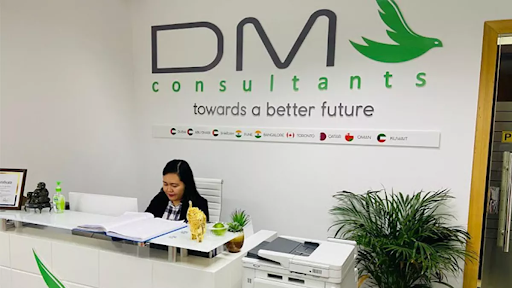
AML, Anti Money Laundering Financial Bank Business Concept, Person hand touching button with AML anti money laundering icon on vr screen.
Money laundering is one of the most important issues facing financial institutions in the current intricate financial ecosystem. In the last 10 years, the role of an AML Analyst has changed dramatically, with technology and data-driven tools taking center stage in the fight against illicit activities. One of the most effective tools in the hands of AML professionals to identify, investigate, and report suspicious activities before they escalate to significant compliance challenges is transaction monitoring.
This article discusses the utilization of transaction monitoring tools by AML analysts to detect financial crimes and keep businesses in check with AML regulations across the globe.
What is an AML Analyst?
An AML Analyst or Anti-Money Laundering Analyst is a compliance officer involved in overseeing and investigating customer payments and activities to identify possible indications of money laundering, terrorist financing, or other potentially illegal actions. These professionals make sure that banks, fintechs, and other financial institutions comply with AML compliance requirements set by international and local regulatory agencies.
The main responsibilities of an AML compliance analyst are to examine the activity trends of customers, to analyze the transaction data, and to report suspicious situations to be investigated. They are a vital part in ensuring that the financial system does not fall prey to the hands of criminals and that the financial institutions’ integrity is not compromised.
What is the Role of Transaction Monitoring in AML Compliance?
A key part of AML compliance is transaction monitoring. It is defined as the process of analyzing customer transactions continuously to determine behavior or trends that are not expected. This may involve abnormally large transfers, frequent cash deposits, or numerous transactions through high-risk jurisdictions.
Transaction monitoring is mainly done to:
Identify suspicious behavior either in real-time or retrospectively.
Comply with Suspicious Activity Reports (SARS) and other support regulatory reporting requirements.
Determine probable contagious customers.
Adhere to AML rules and regulations, including FATF, FinCEN, and the EU AML directives.
Transaction Monitoring Tools are also used by AML Analysts.
The current AML analysts must resort to complex transaction monitoring applications that apply advanced analytics, machine learning, and artificial intelligence to identify anomalies in big data. These tools automate a significant portion of manual labor that previously caused AML investigations to be slow and reactive.
These systems are effectively used by AML analysts in the following manner:
1. Establishing and Adjusting Monitoring Rules
The rules and thresholds provide the impetus behind transaction monitoring systems to determine what is considered suspicious behavior. AML analysts set these rules depending on the risk profile of customers, the nature of the transaction, and the regulations. As an example, an AML compliance analyst can issue alerts on transfers that are over a specific limit or on transactions that deal with risky countries.
2. Detecting and Investigating Alerts
After the system produces alerts, they are reviewed and investigated by the AML analysts. They examine customer transaction history, contrast present behavior with past behavior, and decide whether an alarm represents a real suspicious behavior or a false positive. This is an analytical exercise that involves good judgment.
3. EDD Process
When a transaction or a customer looks suspicious, enhanced due diligence is carried out by the AML analysts. This includes finding out more details about the customer, their source of money, and their business dealings. Analysts can also work with additional departments or open source intelligence to authenticate data.
4. The Submission of Suspicious Activity Reports (SARs)
When there is a confirmation of suspicious activity, AML analysts compose and submit Suspicious Activity Reports (SARS) to the relevant regulatory body. Such reports are essential to law enforcement agencies that investigate money laundering or other financial crimes. Precision and punctuality are important because compliance with reporting is closely observed by regulators.
5. Continuous Optimization
AML analysts also contribute to a better adjustment of transaction monitoring systems to eliminate false positives and enhance their detection. They look at previous notifications, trends, and modify the monitoring parameters to make the system more efficient. This never-ending better has guaranteed improved compliance and lower operating costs.
Effects of Technology in AML Analysis
Technology has also changed the way AML analysts conduct their work. Current AML tools use artificial intelligence and big data analytics to work through millions of transactions in a second. Machine learning algorithms can draw out obscured connections among objects, discover trends that human analysts might overlook, and even anticipate risks.
Indicatively, AIs can analyze transactions to identify subtle anomalies, such as layering, where the funds are transferred across transactions to cover up the source of the funds. Consequently, instead of data analysis by hand, AML compliance analysts will be able to devote more attention to investigation and decision-making.
Difficulties AML Analysts Encounter
Although there are improvements in technology, some factors challenge AML analysts. The amount of financial data is staggering, and compliance teams can still be overwhelmed by false positives. Also, the variance in AML regulations between jurisdictions complicates having similar compliance strategies.
Furthermore, criminals are continually developing new methods, and so AML analysts need to keep abreast of new money laundering trends and adjust their surveillance mechanisms accordingly.
The Future of AML Analysis
AML analytics will become a fusion of AI and blockchain analytics, along with real-time data processing. With increased interconnectivity between financial systems, AML analysts will require both technical skills and regulatory acumen to keep pace with financial crime.
Banks investing in the development of sophisticated AML compliance controls and ongoing training of analysts will be in a better position to comply with regulatory requirements and protect their reputation.
Conclusion
An AML analyst is becoming a necessity in the modern financial environment. Through the proper use of transaction monitoring devices, such professionals identify and stop suspicious transactions that may translate to grave financial offenses. Not only do they ensure that AML compliance is in place, but their work also builds confidence in the international financial system.
The tools and skills of AML compliance analysts should also improve as AML regulations are being constantly updated in order to provide a safer and more transparent financial environment to all.
Author Profile

Latest entries
 MLBNovember 1, 2025World Series: Dodgers Force Game 7 in Drama-Filled Game 6 vs. Toronto Blue Jays
MLBNovember 1, 2025World Series: Dodgers Force Game 7 in Drama-Filled Game 6 vs. Toronto Blue Jays AFCOctober 31, 2025Lamarvelous Return: Jackson’s Four-Touchdown Night Revives Ravens’ Season
AFCOctober 31, 2025Lamarvelous Return: Jackson’s Four-Touchdown Night Revives Ravens’ Season NBAOctober 29, 2025Bucks Erase 12-Point Deficit, Warriors Stifle Clippers, and the Champs Stay Unbeaten
NBAOctober 29, 2025Bucks Erase 12-Point Deficit, Warriors Stifle Clippers, and the Champs Stay Unbeaten NBAOctober 28, 2025Lawmakers Demand Transparency From NBA Amid Widening Betting Probe
NBAOctober 28, 2025Lawmakers Demand Transparency From NBA Amid Widening Betting Probe

 Steelersforever.org
Steelersforever.org




